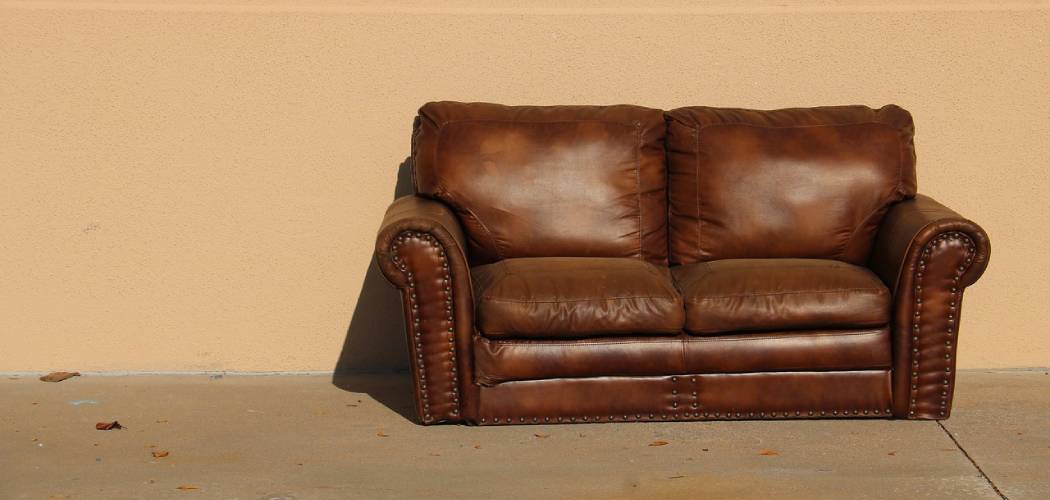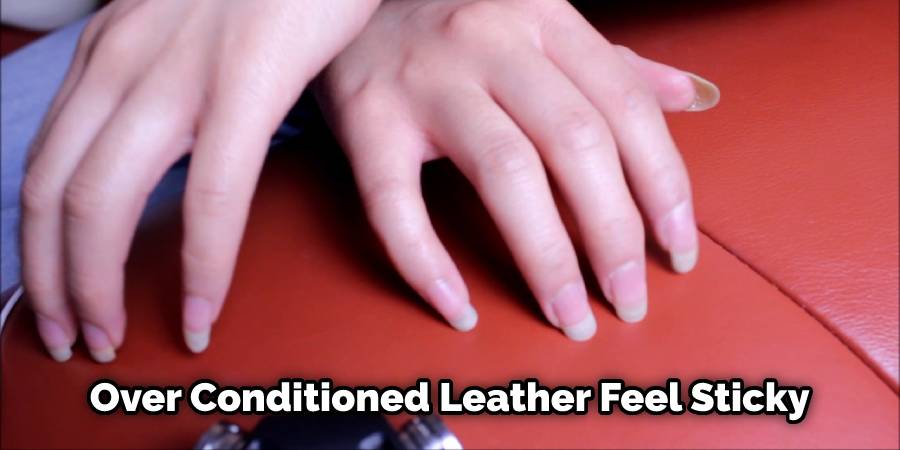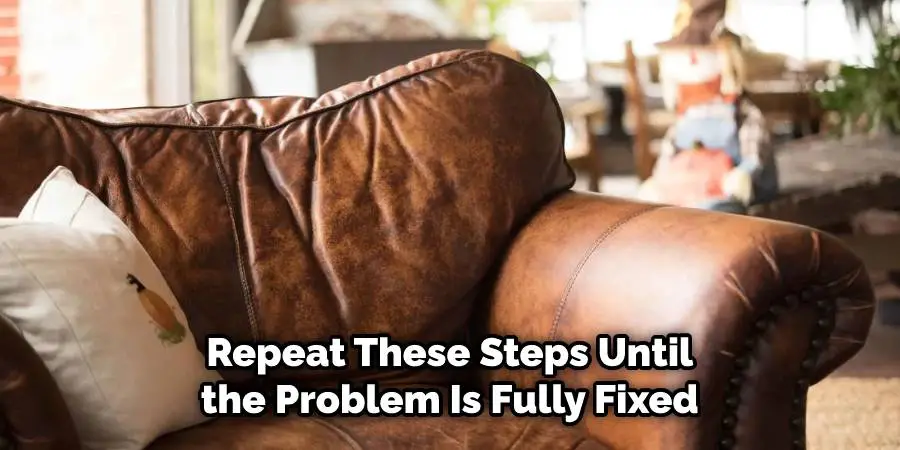When you think of leather, we’re sure the thing that comes to your mind is a luxurious car seat or couch, the perfect jacket for a chilly day, or sturdy shoes that can withstand any weather. Leather is synonymous with luxury and quality, but over conditioning can quickly diminish those characteristics. This article will tell you how to fix over conditioned leather and restore it to its former glory. Read on for more!

Over conditioned leather is leather that has been heavily and repeatedly conditioned with conditioner. It is simple: a person buys a brand new leather product and then keeps conditioning that same piece of leather to keep its softness and prevent any cracking or damage that might happen.
Over-conditioned Leather Problems
There are several significant issues with excessive conditioning on your leather, such as:
1. Peeling
This is when the top layer of the skin becomes very slippery, causing it to come loose from the rest of the skin. This usually happens when you use too many oil-based conditioners on an article since they tend to be thicker than other types. Once again, though, there’s nothing wrong with using moisturizing conditioners, and they’re perfect for items like boots and belts that take a lot of abuse every day. You want to use a different type of conditioner after the first one has soaked into the skin.
2. Puffiness
As the oil soaks deeper underneath the leather, it swells up as it draws in more liquid from other areas. This causes what I call ‘puffiness,’ where you’ll see uneven bumps over the surface of your article once you’ve applied too many moisturizing products. This frequently happens with gloves and wallets since both pieces naturally have creases and folds. Once again, though, this isn’t always bad, especially since some people prefer their gloves and wallets to have a more leathery feel.
3. Dryness
This is another one of those problems that’s difficult to tell at first, but it becomes apparent once you take the item out of storage and realize how stiff it has become. Depending on what kind of product you’re dealing with, over-conditioned leather can cause almost every part of the leather to harden, from the surface up to deep inside the pores.
This usually happens when someone takes a beautiful black coat or bag that was conditioned correctly for years and then starts using slimy oil conditioners on top of it without removing any leftover residue from previous products used.
4. Darkening
If an article wasn’t well removed after its last conditioning session, you could experience this problem where the surface starts to turn darker. This usually only happens on pieces exposed to heavy wear, so it isn’t much of a concern with boots and belts, but it is something to keep in mind if you deal with high-quality leather goods like wallets, bags, and even jackets.

Things You’ll Need
- A small amount of leather cleaner
- A soft brush with firm bristles
- An old towel or a shoehorn
- Leather conditioner
- A rag or a sponge
How to Fix Over Conditioned Leather Step by Step Guide
Step 1: Determine How Badly Over Conditioned the Leather Is
It would help if you always started by looking at the leather to understand how bad it is. There are several ways to tell, but the easiest is to touch it. If there is a sticky feel on your fingers when connecting it, it’s over-conditioned. Remember that some products may leave a residue or waxy feeling on your hand even though they don’t seem sticky.

How badly over-conditioned this depends significantly on what oil was used in the product and how long ago it was applied. Olive oil will be absorbed into the leather reasonably quickly, while petroleum-based products can take before they actually absorb into the leather. How long they sit on top of it will also affect the ability to remove them afterward.
Step 2: Remove as Much Oil from the Leather As Possible
To do this, you should use a leather cleaner designed to remove grease and oil from leather surfaces. The best thing to use is Lexol Vinylex, but if you don’t have any around the house, Lysol toilet bowl cleaner can be used instead. The process for doing this isn’t pretty because we need so much of it, and it’s very messy and smelly and slimy stuff, but it will work in getting all of that residue off your shoes or handbag.
For removing petroleum-based products, spray some onto a cloth before applying it directly onto the leather. Then, use a soft brush to rub it and wipe away the excess from the surface. For a more thorough cleaning of your leather, you can use a suede brush on all areas that have been over-conditioned.
Step 3: Add Leather Conditioner
After using a cleaner or getting rid of as much oil as possible, add some conditioner back into the leather. How much you use will depend on how dry it is, but generally, around an ounce per square foot of leather should be enough for most surfaces. Spread it around with a rag or sponge before allowing it to dry overnight.

You may want to cover any furniture near where you are working if there is a powerful odor from whatever cleaner you use because they won’t smell too pleasant until they have been aired out. Ensure that leather is dehydrated before reapplying any cream or oil to it.
Step 4: Fix Over Conditioned Leather With Olive Oil
Using olive oil is a little trickier than most other oil because it tends to get absorbed into the leather rather than sit on top. To do this, you’ll need a few things. Start by pouring a small amount of olive oil onto a clean cloth and use it to spread the oil over the surface in a thin layer.
Please make sure you work it around all areas evenly so there are no dry spots left behind before covering it with another cloth and placing something heavy on top for about ten minutes or until the oil has soaked into the leather. After that, add some conditioner like Lexol Vinylex or nothing before allowing it to dry overnight. How much conditioner you use will depend on how dry the leather surface is.
Step 5: Finishing
After all of this has been done, you should be able to use your leather products without having them get stuck onto the surface. Remember that over-conditioning doesn’t happen overnight, and the longer it’s on top of your leather, the harder it will be to get rid of.

The effects of one treatment won’t last very long, so if you want better results than just using a leather cleaner or simple conditioner, you’ll need to repeat these steps until the problem is fully fixed. If cleaners leave any stains behind, consider working some Gumption into them before conditioning. These steps will help in how to fix over conditioned leather.
Frequently Asked Questions
Will Coconut Oil Restore Leather?
Coconut oil is a popular product that many people use to moisturize their skin and hair. However, several companies that sell leather conditioners have marketed coconut oil as a leather conditioning agent or cleaner for years.
The marketing has been so effective that many people who know nothing about caring for leather mistakenly believe coconut oil is an excellent product to use on conditioned leather. Do not use coconut oil on your leather. Coconut oil will ruin your nice leather furniture or other items by making it sticky and gummy over time!
Does Conditioning Leather Make It Darker?
Conditioning leather is a pretty common practice among those who work with it and people who own certain leather goods. However, if you’re wondering whether or not conditioning your leather goods will make them darker or change their color, the answer is: yes and no.
When you condition your leather items, be prepared to see more color on the surface. Conditioning will darken some lighter colors and lighten some darker colors; you must test out certain products on small parts of the piece before applying them all over. Even if you’ve done this, be aware that every different type of leather takes dyes and finishes differently and absorbs them differently! Keep these things in mind if you’re worried about the color of your leather.
Conclusion
The leather industry is one of the most booming industries in the world. Leather products are used for furniture, fashion, accessories, and more. Unfortunately, people use these items all day long, leading to over-conditioning of their leather goods. This article explains how to fix over conditioned leather by using a few simple steps to ensure your clothes last longer while looking better than ever before!
You may also read – How to remove sticky residue from leather.

